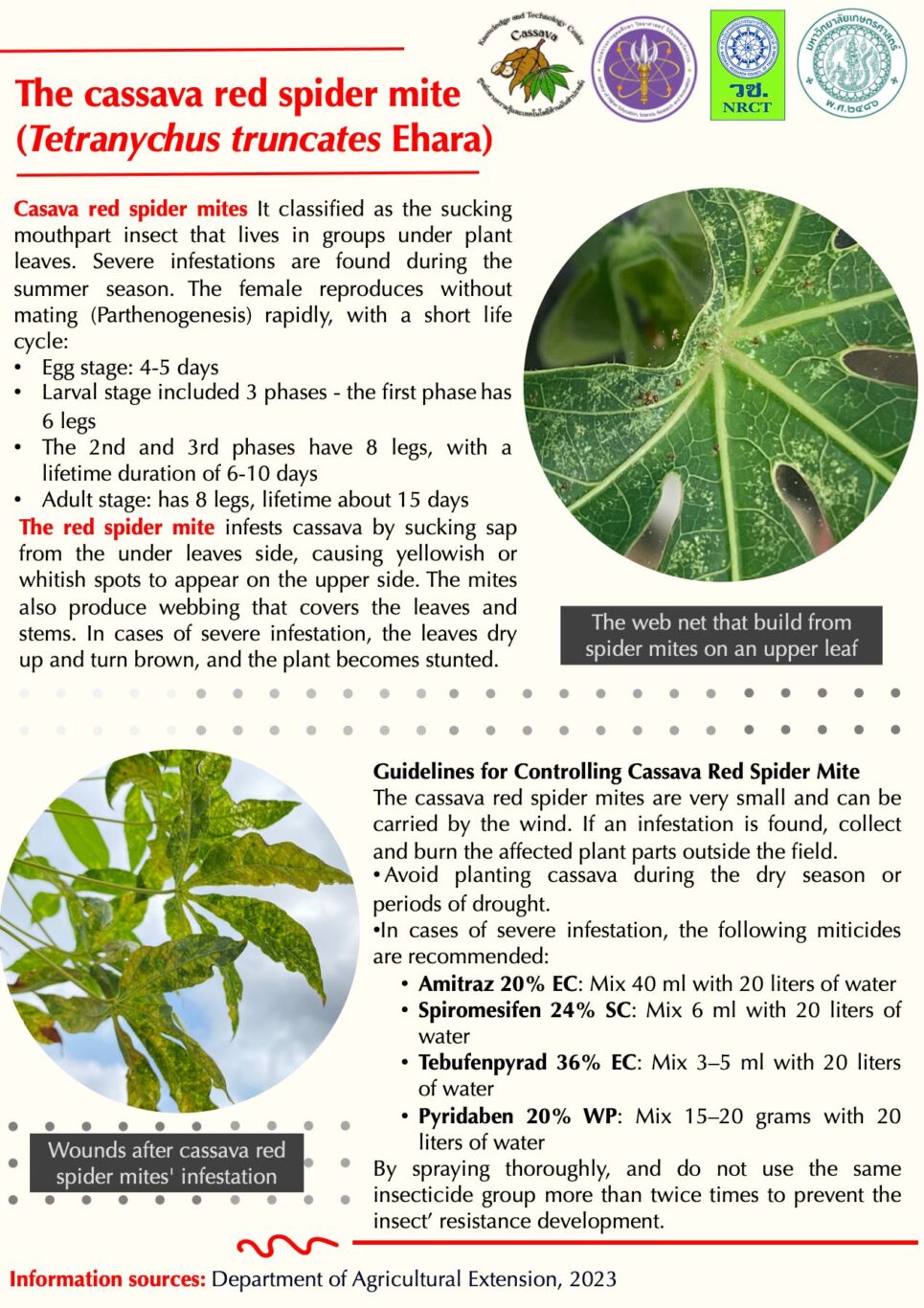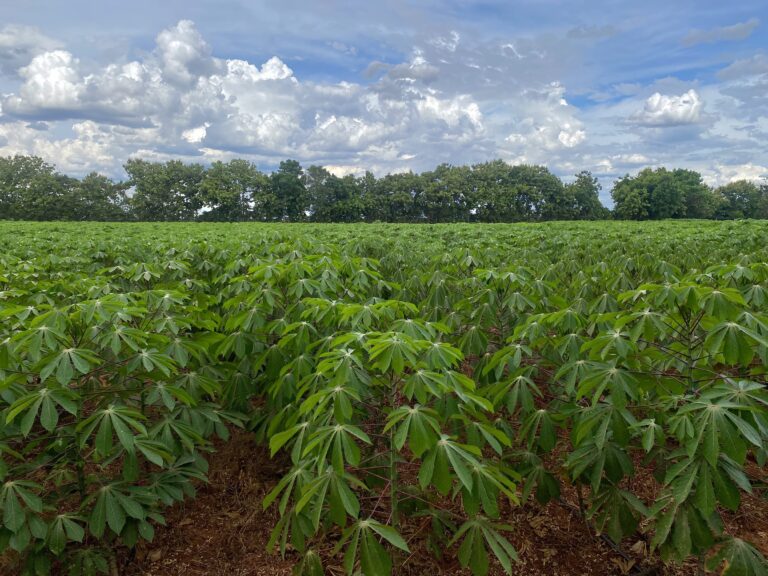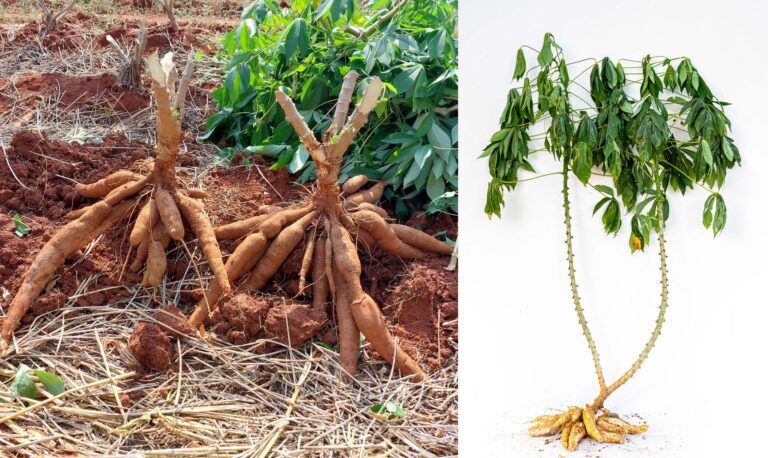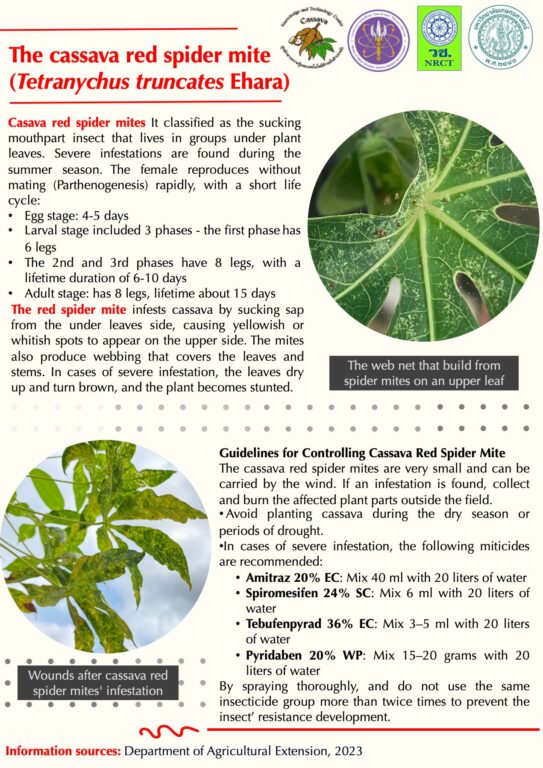Casava red spider mites (Tetranychus truncates Ehara)
Casava red spider mites It classified as the sucking mouthpart insect that lives in groups under plant leaves. Severe infestations are found during the summer season. The female reproduces without mating (Parthenogenesis) rapidly, with a short life cycle.
Life cycle
- Egg stage: 4-5 days
- Larval stage included 3 phases – the first phase has 6 legs
- The 2nd and 3rd phases have 8 legs, with a lifetime duration of 6-10 days
- Adult stage: has 8 legs, lifetime about 15 days
The red spider mite infests cassava by sucking sap from the under leaves side, causing yellowish or whitish spots to appear on the upper side. The mites also produce webbing that covers the leaves and stems. In cases of severe infestation, the leaves dry up and turn brown, and the plant becomes stunted.
Guidelines for Controlling Cassava Red Spider Mite
- The cassava red spider mites are very small and can be carried by the wind. If an infestation is found, collect and burn the affected plant parts outside the field.
- Avoid planting cassava during the dry season or periods of drought.
- In cases of severe infestation, the following miticides are recommended:
– Amitraz 20% EC: Mix 40 ml with 20 liters of water
– Spiromesifen 24% SC: Mix 6 ml with 20 liters of water
– Tebufenpyrad 36% EC: Mix 3-5 ml with 20 liters of water
– Pyridaben 20% WP: Mix 15-20 grams with 20 liters of water
By spraying thoroughly, and do not use the same insecticide group more than twice times to prevent the insect’ resistance development.
Information sources: Department of Agricultural Extension, 2023




